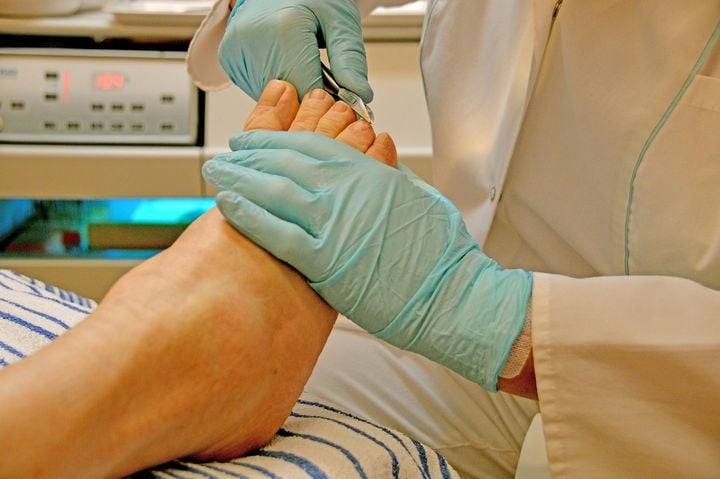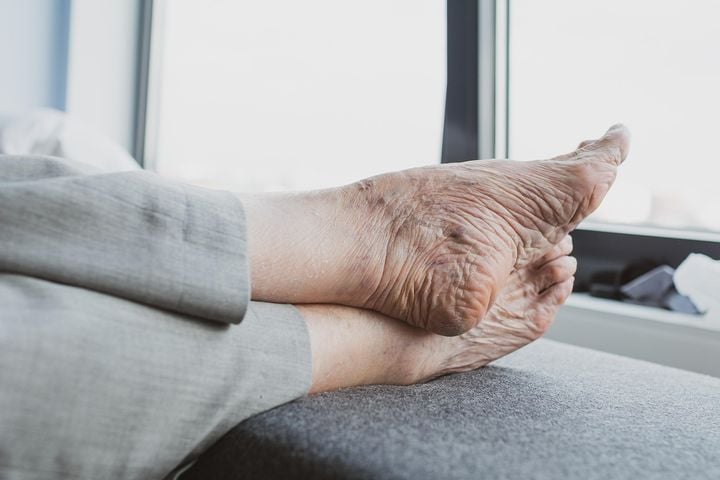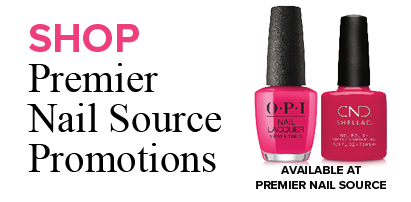Nailcare Academy (NCA), Naples, FL, an online educational company, explains the new concept moving through the industry, the medical pedicure, what it is, and how it fits into our industry.
“Licensed nail technicians and salons are adding it to their menus,” says Janet McCormick, owner and author of Nailcare Academy, “so they need to know what it is and the requirements for having this service safely on their menu.”

Image by Katja Fissel from Pixabay
First, what it is not:
A medical pedicure is not just the name of a pedicure added to a salon menu where the technician performs “careful care.”
Now, what it is:
The medical pedicure is a cosmetic foot care service offered by a safety-trained and specifically certified nail technician who has a referral relationship with a podiatrist. (This technician does not diagnose nor perform medical-level care.) This technician has certifications on the wall that prove the service is being performed by a tech trained in safe care. Is this knowledge important to performing a medical pedicure? Yes. This client trusts that the technician performing this so-called medical pedicure is qualified to safely care for chronically ill clients and needs to see proof that is true.
48%-51% of Americans over 20 have at least one chronic illness (CDC, 2022) and require the technicians know their special needs during their pedicure. This safety-trained technician provides a thorough analysis of the client's feet prior to the service to identify anything on the feet that might require a visit to a podiatrist before the pedicure or if certain precautions should be taken. If the referral is needed, the service is stopped and the referral activated. If no referral to medical care is needed, the pedicure continues.
Before this analysis, new clients fill out a new client sheet and their answers support the technician recommending and then performing a safe pedicure for them. If they have a chronic condition, the safety-trained nail technician knows what precautions are needed and incorporates them in the service. If all is well, the technician proceeds with the pedicure.
Examples of these changes follow: If, while filling out the new client sheet the client reveals they are an insulin-dependent diabetic, the safety-trained nail technician would not soak their feet in water or whirlpool baths nor use metal implements. Many other chronic illnesses have this requirement also. Also, clients with certain chronic conditions cannot have a traditional massage due to manipulation of the vascular system; the safety-trained nail technician incorporates a safe alternative into the pedicure.
These and other safety techniques are taught in online Nailcare Academy certification programs at nailcareacademy.com. The programs, the Advanced Nail Technician, the Wellness Nail Technician, and the Medical Nail Technician Internship Programs provide training in safety and precautions of care. This higher-level training, along with the technician’s relationship with a podiatrist elevates this cosmetic pedicure to being a service that can be listed as a legitimate “medical pedicure" while maintaining the Scope of Practice of a cosmetic service. Without the technician having the specialized training and the podiatric relationship, it is just a pedicure, the name is a false claim, and the pedicure can be dangerous to the client who is seeking a safe pedicure.

Image by Sabine van Erp from Pixabay
The important precautions in foot care for the chronically ill and elderly demonstrate the differences between the traditional and medical pedicure. The differences are based on the safety training of the technician and not on the name nor the “careful” protocol of the pedicure. The Advanced Nail Technician, Wellness Nail Technician, and Medical Nail Technician Programs at nailcareacademy.com train licensed nail technicians and cosmetologists in these safety and precautionary techniques for performing safe pedicures and in how to develop a collaborative relationship with a podiatrist.
To learn more about NCA courses, visit nailcareacademy.com.
More Safe Pedicure Content:
For reprint and licensing requests for this article, Click here.

